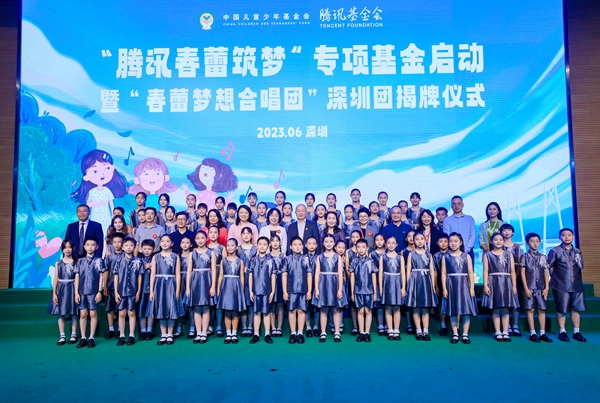Skilled Craftspeople Turn Decayed Wood into Art
Can decayed wood be carved into fine works of art? If you take the time to examine the exquisite carvings created by skilled craftspeople in Caoxian (a county in Sunlaojia, a town in Heze, a city in East China's Shandong Province), you will no doubt be impressed by the artists' skills. In 2021, China added Caoxian's woodcarving craft to the list of the country's items of intangible cultural heritage.
Shandong Caoxian Yun Long Wood Carvings Co. Ltd., under Yun Long Cultural Industry Group, has been designated as a State-level intangible cultural heritage organization. The company's exhibition hall is filled with various wood carvings. Cai Xiufang, company chairperson and a State-level inheritor of the craft, stresses it is not an easy task to create a carving. A mistake at any stage can ruin the item.
For generations, Caoxian's craftspeople have made tremendous efforts to improve their carving skills. The craft entered its golden age during the Ming (1368-1644) and Qing (1616-1911) dynasties. However, due to historical reasons, the art form waned in modern times.
It was not until the early 1980s, shortly after China implemented its policy of reform and opening-up, that Caoxian's woodcarving craft experienced its revival. During the 1990s, Cai married a resident of Lizhuang, a village in Sunlaojia. Both Cai and her husband were born into wood-carving families.
Shortly after she got married, Cai began creating wood carvings (used in daily life), so she could help her family meet its daily expenses. The carvings, with various patterns (including figures, flowers, birds, fish and insects), were well received by her fellow residents. Within a short time, Cai began taking on apprentices (including many women), so they could help her fill clients' orders.
As an increasing number of Lizhuang's residents have studied the traditional craft under Cai throughout the years, they have worked hard to revive their hometown's woodcarving craft. They have also improved and innovated the technical skills used to create the carvings.
"Most of the elder generation of craftspeople have never left their homes ... Now, we have many opportunities to discuss how to improve our carving skills with carvers (across the country). That helps broaden our vision," says Cai. She studied Fujian (in Southeast China)'s traditional woodcarving skills (from skilled craftspeople), so she could integrate Caoxian and Fujian's craftmaking skills, to create carvings with better artistic effects.
As Cai has led craftspeople (in Caoxian) in developing and promoting the traditional craft worldwide during the past two decades, the carvings have become increasingly popular with people the world over.
To date, Cai has taken on more than 300 apprentices. Given the craftspeople's tremendous efforts to inherit and promote the craft, during the past several decades, the traditional cultural heritage has been developed into Heze's iconic cultural symbol, and one of Caoxian's pillar industries.
In recent years, Caoxian's wood carvings have sold well in many regions of the country, especially via e-commerce platforms. In 2022, Shandong Caoxian Yun Long Wood Carvings Co. Ltd. sold more than 20,000 carvings online. The company generated more than six million yuan (US $857,143) in revenue that year.
(Women of China English Monthly September 2023 issue)
Please understand that womenofchina.cn,a non-profit, information-communication website, cannot reach every writer before using articles and images. For copyright issues, please contact us by emailing: website@womenofchina.cn. The articles published and opinions expressed on this website represent the opinions of writers and are not necessarily shared by womenofchina.cn.?








 WeChat
WeChat Weibo
Weibo 京公綱安備 11010102004314號
京公綱安備 11010102004314號